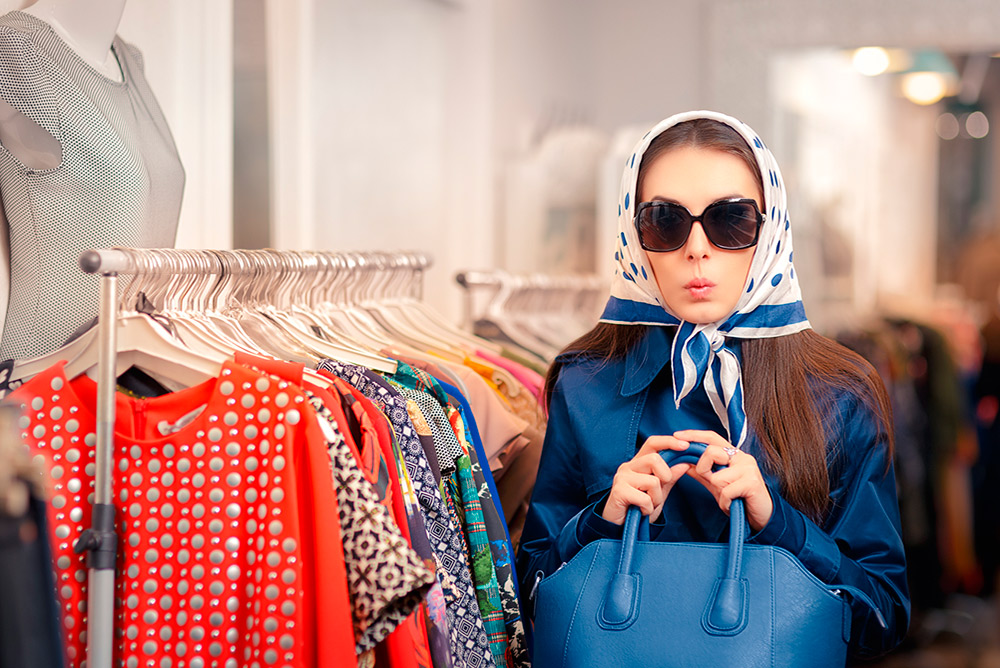
iStock
THE ONLY MANIA listed in my favorite bathroom book, “A Word a Day” by Anu Garg, is oniomania, defined as shopping addiction (from the Greek onios meaning sale; and mania, insanity). The entry includes a quote from Imelda Marcos: “I did not have three thousand pairs of shoes, I had one thousand and sixty.”
The suffix “mania” currently has many meanings — from excessive obsession that becomes pathological to excessive enthusiasm (Beatlemania, bibliomania). In one definition, oniomania is the compulsion to spend money regardless of need or financial means, along with feelings of being out of control.
The urge to splurge can range from “adaptive” — shopping as a mood lifter, or retail therapy — to an impulse-control or obsessive-compulsive disorder, officially labeled Compulsive Buying Disorder (CBD), becoming a riskier mania with so many purchases just a few clicks away. (Compulsive buying is considered an addiction but not a distinct disorder by the American Psychiatric Association.)
It’s estimated that CBD affects about 18 million Americans or as much as 8% of the U.S. adult population. Most say 80 to 90% are women — as opposed to alcoholism, which affects more men — although a recent poll found the sexes more equally represented. CBD is usually detected when debt piles up, although some sufferers return purchases because they feel guilty — and then the guilt triggers another shopping spree — keeping them out of debt, and their CBD well-hidden.
One episode of the reality-TV series “Intervention” (11 seasons ending in 2011) portrays Vanessa (last names not given), an actress who made several TV appearances on the series “ER.” In Vanessa’s apartment, piles of clothes with tags still on cover every flat surface and hang all over the walls, and she has unpayable credit card debt. For participating in “Intervention,” Vanessa receives one month of treatment, which in the epilogue she deems “not successful.”
CBD usually is chronic and begins in the late teens or early twenties. Addictions have been traced generally to environmental triggers for specific behaviors, such as gambling or drinking, and 10-15% of sufferers may also have a genetic predisposition. Compulsive shoppers participating in Debtors Anonymous, as compared with the general population, have lower self-esteem, a tendency toward fantasizing and vulnerability to depression and anxiety.
Shopping addiction has been traced to emotional deprivation in childhood, perfectionism, the need for control and other issues. Once a particular substance or activity has triggered the release of pleasure-producing chemicals like endorphins and dopamine in the brain, addicts are driven to repeat that experience.
CBD often occurs in conjunction with diagnoses like anxiety and eating disorders. Without associated diagnoses or until the disorder causes financial difficulties, it’s rarely taken seriously as an “emotional behavior disorder” (EBD), such as anxiety. Among the symptoms of EBD are frequent annoyance, nervousness or anger; difficulty following rules; trouble handling frustration.
Having more than four indicators from the following list can help distinguish a pleasure spree from CBD, according to what Rick Zehr of the Illinois Institute for Addiction Recovery told WebMD: spending money caused by feeling angry or depressed; arguing with others about your shopping; having withdrawal symptoms when deprived of credit cards; thinking obsessively about money; and spending a lot of time juggling accounts or bills to accommodate spending.
But other items on Zehr’s list may be shared by those without a psychological addiction, such as buying items on credit and feeling a rush of euphoria and/or guilt or embarrassment after making purchases. And lying about how much something costs can indicate either pathology or a general reluctance to satisfy nosey parkers.
Treatment for shopping addiction is often multi-faceted and includes Cognitive Behavior Therapy, medications such as antidepressants aimed at reducing impulsivity, a 12-step program like Debtors Anonymous, and credit counseling. At Zehr’s facility, the average addiction-related debt is around $70,000.
New York psychologist April Lane Benson, founder of Stop Overshopping, LLC, helps clients understand what they are “really shopping for, what are the underlying authentic needs — Shopping because you’re lonely? Shopping to celebrate? — and finding other ways to meet those important needs.”
What’s different from most other pathological obsessions is that compulsive buying is condoned by society, Benson says. “President Bush didn’t tell us to go out and drink and take drugs, but he did tell us to go out and shop. Consumption fuels our economy.”
— Mary Carpenter
Mary Carpenter is the well-being editor of MyLittleBird. Her last post was about how much protein you need to eat. (This is one in an occasional series on manias, philias and phobias.)
